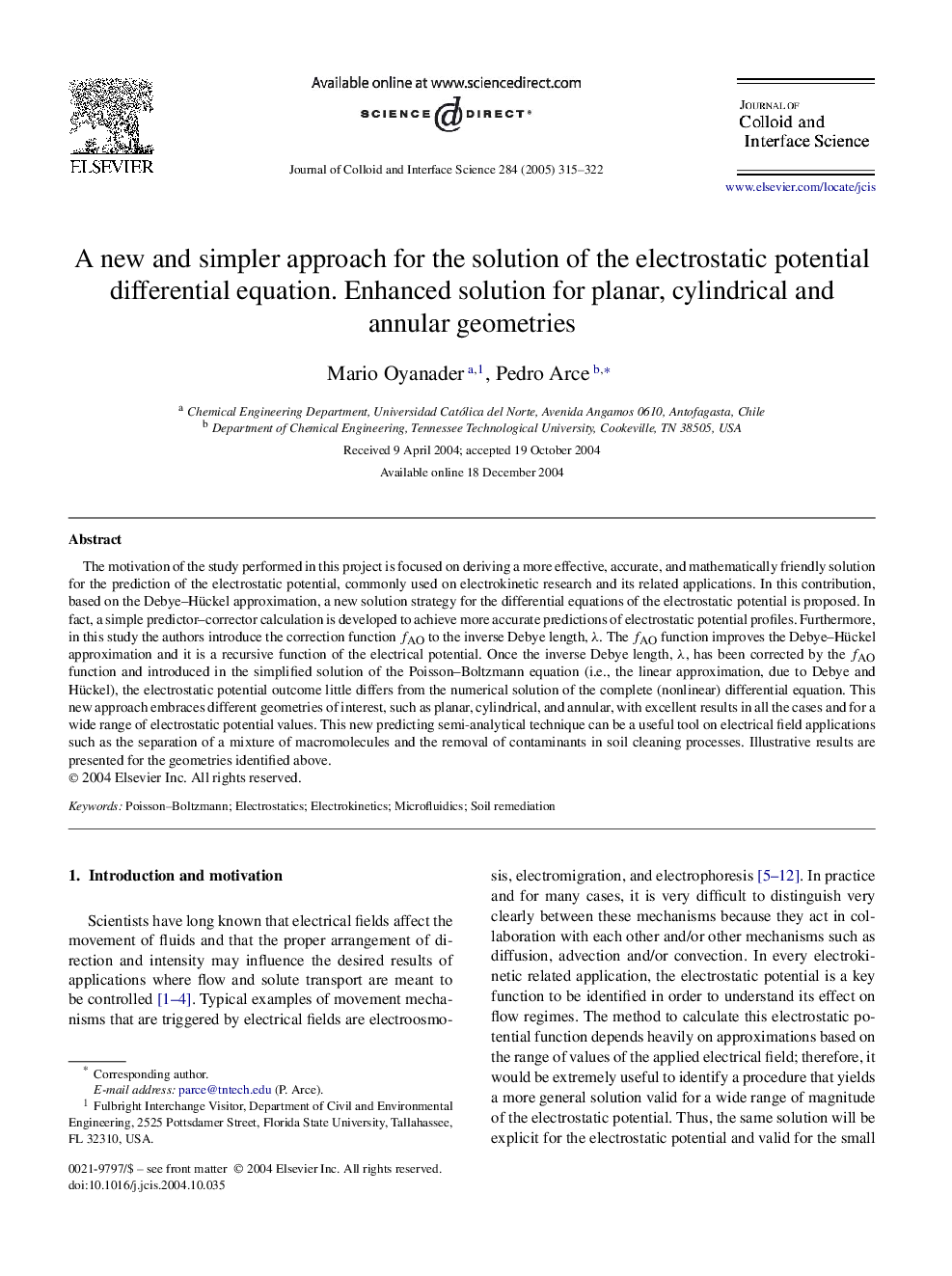| Article ID | Journal | Published Year | Pages | File Type |
|---|---|---|---|---|
| 10378191 | Journal of Colloid and Interface Science | 2005 | 8 Pages |
Abstract
The motivation of the study performed in this project is focused on deriving a more effective, accurate, and mathematically friendly solution for the prediction of the electrostatic potential, commonly used on electrokinetic research and its related applications. In this contribution, based on the Debye-Hückel approximation, a new solution strategy for the differential equations of the electrostatic potential is proposed. In fact, a simple predictor-corrector calculation is developed to achieve more accurate predictions of electrostatic potential profiles. Furthermore, in this study the authors introduce the correction function fAO to the inverse Debye length, λ. The fAO function improves the Debye-Hückel approximation and it is a recursive function of the electrical potential. Once the inverse Debye length, λ, has been corrected by the fAO function and introduced in the simplified solution of the Poisson-Boltzmann equation (i.e., the linear approximation, due to Debye and Hückel), the electrostatic potential outcome little differs from the numerical solution of the complete (nonlinear) differential equation. This new approach embraces different geometries of interest, such as planar, cylindrical, and annular, with excellent results in all the cases and for a wide range of electrostatic potential values. This new predicting semi-analytical technique can be a useful tool on electrical field applications such as the separation of a mixture of macromolecules and the removal of contaminants in soil cleaning processes. Illustrative results are presented for the geometries identified above.
Related Topics
Physical Sciences and Engineering
Chemical Engineering
Colloid and Surface Chemistry
Authors
Mario Oyanader, Pedro Arce,
